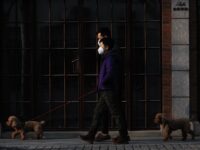With cases surpassing two million nationwide, hospitals and healthcare systems across the country have stepped up to meet the unprecedented challenges of COVID-19. Doctors, nurses, and other healthcare workers courageously serve those weakest while risking it all — reusing personal protective equipment (PPE), taking up additional shifts, and often living in hotels or garages in fear of infecting loved ones.
Despite often filling beyond capacity and providing thousands of tests daily, U.S. hospitals are losing an estimated $50.7 billion per month, according to the American Hospital Association (AHA). While hospital revenue has sharply declined since the start of the pandemic, hospital expenses have dramatically sky-rocketed.
Before the pandemic, many hospitals, particularly independent and rural hospitals, were already losing money.
As the pandemic spread, governors across the country quickly mandated the indefinite cancellation and delay of all elective operations and procedures. Though these swift actions improved public safety by preventing unnecessary contact while simultaneously preserving PPE, they’ve directly resulted in immediate and widespread financial distress among hospitals. Before the pandemic, many hospitals, particularly independent and rural hospitals, were already losing money. According to the AHA, about 23 percent of hospitals in the United States lost money in 2015. The pandemic has only exacerbated the financial fragility of hospitals caused by a flawed business model.
The financial success of most hospitals heavily relies on providing elective, well-reimbursed procedures, like orthopedic surgeries and radiological scans, to privately insured patients. Conversely, patients covered only by public insurance, like Medicare and Medicaid, cost hospitals $57.8 billion per non-pandemic year, according to the AHA. Furthermore, hospitals lose additional money by providing uncompensated care for those uninsured. Now, with nearly all healthcare resources committed to COVID-19 treatment, the business model of hospitals is evidently failing during these unprecedented times.
The financial success of most hospitals heavily relies on providing elective, well-reimbursed procedures, like orthopedic surgeries and radiological scans, to privately insured patients.
At-risk populations, primarily the elderly and people with underlying conditions, have significantly higher COVID-19 hospitalization rates. Minority groups face disproportionately higher rates of COVID-19 infection and death. In a recent Centers for Disease Control and Prevention (CDC) report, 33 percent of hospitalized patients were Black, compared to only 18 percent in the greater community. Ultimately, these groups are more likely to be on public insurance, like Medicaid, or uninsured. According to the CDC, Hispanics/Latinxs are nearly three times more likely to be uninsured compared to white people and Black people nearly twice as likely compared to whites. These numbers present financial challenges for hospitals, as the surge in uninsured or underinsured Americans seeking medical attention applies yet another strain on the already fragile healthcare system.
With hospitals receiving less from public insurance than the cost of treatment and little to no money from the uninsured, hospitals are forced to take the financial burden as more are hospitalized. To put it in perspective, the Kaiser Family Foundation estimates the cost of treating a COVID-19 patient often exceeds $20,000. It can even extend up to $88,000 for patients that need ventilator support. Moreover, with unemployment rates nearing 15 percent as of April 2020, many American families have lost insurance provided by their companies, further increasing the amount of uncompensated care at hospitals. Compared to March of 2019, charity treatment has risen about 13 percent in 2020, according to a recent study from Kaufman Hall.
Though the cancellation of elective procedures has helped to preserve the limited supply of PPE, healthcare workers have still ultimately been forced to reuse N95 masks or resort to the lovingly-sewed, but less effective, homemade masks.
Though the cancellation of elective procedures has helped to preserve the limited supply of PPE, healthcare workers have still ultimately been forced to reuse N95 masks or resort to the lovingly-sewed, but less effective, homemade masks. The shortage of PPE spans the entire country. Even rural hospitals that have not seen a COVID-19 case face shortages and high prices. Gowns that cost 50 cents before the coronavirus pandemic fetched nearly $10 in peak shortage periods. Face shields costing $1.25 before the pandemic went for upwards of $25. These high prices and need for face coverings for all staff force hospitals to spend much more than budgeted for PPE.
As a result of lost revenue and rising expenses, hospitals must furlough or lay off the healthcare heroes in the midst of the pandemic. According to the US Labor Department, about 1.4 million healthcare workers lost their job in April of 2020. Furthermore, the cancellation of elective procedures at rural, independent hospitals, which have often seen very few COVID-19 cases but are burdened by rising expenses, is expected to push many perilously close to closing. Since 2010, 130 rural hospitals have closed across the country. These hospitals are critical for healthcare equity. With the pandemic only accelerating the closure of rural hospitals, some Americans could be forced to drive more than an hour to the nearest doctor, which would be catastrophic in cases of emergencies. With COVID-19 still an eminent threat in many parts of the country, this pandemic will continue to expose and exacerbate the issues of America’s fragile and inequitable healthcare system.
Morb Mortal Wkly Rep (2020). doi.org/10.15585/mmwr.mm6915e3
Image source: Pixabay.






